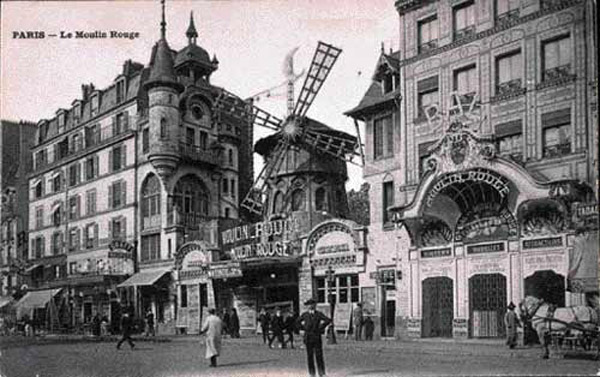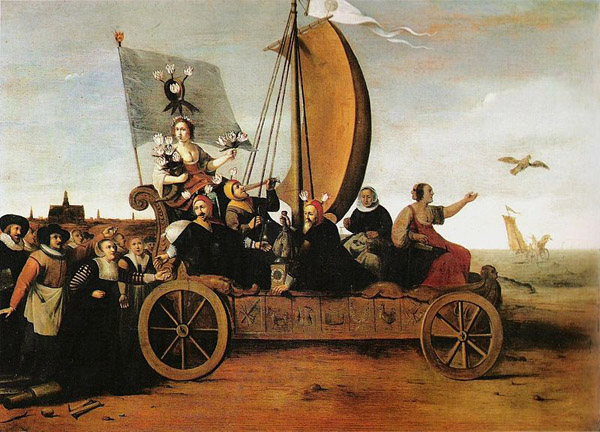Bubble as Metaphor
Metaphor
Conceptual metaphor: Understanding one idea in terms of another.
Language about language.
Conceptual domain: Conscious or unconscious organization of
experience; sensation.
Subjective: It is (feels) hot (quality)
Objective: It is 150 F. (quantity)
According to George Lakoff and Mark Johnson in the 2003 Metaphors We Live By, they offer this explanation.
The speaker puts ideas (objects) into words (containers) and sends them (along a conduit) to the hearer who takes the idea/objects out of the word/containers.
It would seem that the whole of human thought is metaphor.
In the development of consciousness from infancy and onward, there is an individuation, a separation into parts of all that is perceived . These parts are assigned identities (conceptual domains). Basically the identities are: it, that or this. Not as words but as recognition of an entity (object or sensation) that eventually serves to create and define the self by comparison and by elimination, “I am not that.” “That is not me.” eventually becoming “I am this.” and “That is that.”
Identification of the objective and subjective landscape is imperative for survival. In order to grasp reality the mode for identification is metaphor.
Metaphor defines and hence isolates the entity, concept or sensation; cognition. The identification of each experienced object or subject is the component of language. Language is not limited to words. Language is cognition and recognition. Responses to pleasant or unpleasant experiences do not require words for identification. Happiness or sadness and their bodily expressions are part of the lexicon. Emotional and physical responses to stimuli are the constant companion of consciousness, the basis of aesthetics.
Bub-ble
noun
Anything that lacks substance, firmness or permanence; an illusion or a delusion.
A speculation that is inflated; esp. fraudulent
A period of wild speculation in which the price of a commodity or stock or an entire market is inflated beyond its real value. Bubbles are said to “burst” when general awareness of the ”folly” emerges and the price drops.
With regards to inflated speculation, Charles Makay in his often quoted Extraordinary Popular Delusions and the Madness of Crowds addresses the tulip mania of the 17th century.
The tulip was first cultivated in Persia in the 10th century. The Turks introduced it to Europe in the mid 16th century as a gift to Ferdinand I of the Holy Roman Empire. He in turn introduced the tulip to the Netherlands.
It was completely different from any flower in Europe at that time. It possessed a lush and intense saturation of color which made it so desirable.
It takes from 7 to 10 years for a tulip to grow from seed to a flowering bulb. Bulbs can produce both seeds and 2 or 3 bud clones annually. The “mother” bulb lasts only a few years. Mosaic virus or tulip breaking virus produces the striped, multicolored varieties. Tulips bloom in April and May for only a week. During the dormant phase, June to September bulbs can be uprooted and moved.
Because of its 7 to 10 year maturation and the high demand for the tulip, it became a pricey status symbol of the highest order. Tulip bulbs were bought and sold during the June to September dormant period. In 1624 a single bulb could sell for as much as 3,000 guilders, an amount equal to the annual salary of a wealthy merchant. Tradesmen and farmers mortgaged their property for the opportunity to make a 400% profit on a trade. A farmhouse could be traded for 3 bulbs. Since the supply of buyers grew quicker than the supply of bulbs, futures were offered to accommodate the market demand. By 1636 tulip bulbs became the 4th leading export item of the Netherlands after gin, herring and cheese.
By 1637 a single bulb could be resold 10 times in a day. Some tulip bulbs became the most expensive objects in the world, valued at 10 times the annual income of a skilled craftsman. Then in the winter of 1637 trading changed. The market started its collapse. It began in Haarlem. Buyers didn’t show up at auction because Haarlem was in the midst of a breakout of bubonic plague. With little or no trading activity prices fell. The public fearing loss rushed to sell. Prices plummeted, the bubble burst and the market crashed.
Can-Can
In the Montparnasse ballrooms of 1830 Paris, working class couples developed a raucous and gritty variation of the Galop, a lively country dance in 2/4 time not unlike the Polka. This new dance was called Chahut. It was also called Cancan. In the early years this urban social dance consisted of men and woman racing and gamboling on the dance floor, flinging their arms and legs up and about in a frightening display of energy and liberty.
The women wore very long skirts as was the fashion of the time and in order to free up their kicks and rhythmic leaping they pulled up their skirts and scandalously revealed more than was generally considered appropriate. Working class women wore drawers under their skirts. Drawers at that time were of an open design, that is, they were composed of two tubes of fabric, one for each leg. The combination of open drawers and lifted skirts sometimes resulted in some dancers being arrested or dance halls being shut down. This lifting of skirts and the possibility of a glimpse brought many outsiders to Montparnasse. Slumming became fashionable and Cancan became an entertainment. Some of the best of the working class dancers became stars and dance halls became venues for the mainstream to visit. By the end of the 19th century dancers were wearing elaborate undergarments and black stockings. Still shocking but not as revealing. These costumes became the standard. Women danced in a chorus line, The standard moves were to leap high into the air and land on the floor in a full and painful looking split. The favorite of the crowd was for the chorus line to turn their backs to the audience, bend over and toss their skirts up their backs to reveal their bottoms. The French answer to Queen Victoria.
It was in 1889 in the Pigalle district that the cabaret with the red windmill on the roof, the Moulin Rouge was founded. It was the epicenter of Cancan. Certainly not the birthplace of Cancan but undoubtedly the epitome The Moulin Rouge was frequented by all classes. Workers could mingle with businessmen, artists and upper crust, all rubbing elbows in the crowd.
Along with offering the greatest Cancan in Paris, entertainers of many descriptions were presented as in the manner of the circus. One such performer, the flatulist Joseph Pujol who’s stage name was Le Petomane. His virtuosic flatulence bestowed remarkable replications of thunderstorms or cannon fire. On stage he would blow out a candle from a distance of several yards and performed O Sole Mio and La Marseillaise on an ocarina played by way of a tube and posterior exhalations. His performances were visited by Edward, Prince of Wales and King Leopold II of Belgium. Sigmund Freud was also a witness to these unique and vulgar instrumentals.

Moulin Rouge 1952
Director John Huston
Jose Ferrer as Henri de Toulouse-Lautrec
Zza Zza Gabor as Jane Avril
Jane Avril, the poor abused child who ran away from home. She suffered from St. Vitus’ Dance. After failed attempts at suicide she was taken into a brothel. Dancing in Paris, she worked her way all the way up from gritty dance halls to the Moulin Rouge to be the premiere Cancan dancer. Her portraits, created by Toulouse-Lautrec, appeared on publicity posters for the Moulin Rouge.
The camera pans across the crowd. We can see the Champagne counter reflected in the tilted mirror. A bowl of oranges displayed on the marble counter as in the Manet painting of the Follies Bergere, but this is the Moulin Rouge. Now the cut is to the lively cancan performed by four expert, artistic and brutal dancers, two men and two women. The two women are rivals. We see them compete for ever more daring and difficult moves and just like a good old wrestling match, one surreptitiously trips the other and all hell breaks out; John Huston’s nod to the working class of Paris who created the cancan. Now we see Toulouse-Lautrec guzzling cognac, drawing on the tablecloth. Now we hear the soapy strains of an old sentimental song crooned by an even soapier voice. The camera cuts away from a drunken Toulouse-Lautrec to reveal Zza Zza Gabor playing the role of Jane Avril. Zza Zza, ineptly but earnestly lip syncing to the voice of Muriel Smith. Zza Zza beaming toothsome smiles into the camera. She tilts her head, musters all of her grace and slowly lip syncs her way down the steps vouging for the camera, making her way to the center stage.
Zza Zza the glamorous platinum blonde socialite bedecked with diamonds, famous for being famous. She spoke with a near monotone tinted with an Hungarian accent. Her manner hinted at a fiery, perhaps rageful inner person. She had 9 unsuccessful marriages resulting in 8 successful divorces. She was the epitome of the trophy wife. Her men had yachts, estates, esteem. Other men could declare that they had it all. Only 9 men could claim they had Zza Zza. It must have been worth the settlement. The classic win-win situation.
Much like so many who buy art as the luxury item, possession of the artist’s name grants status. Marriage with a trophy does not offer real esteem, nor does acquisition of status art. It certainly does seem to inflate the trophy beyond its actual status.

